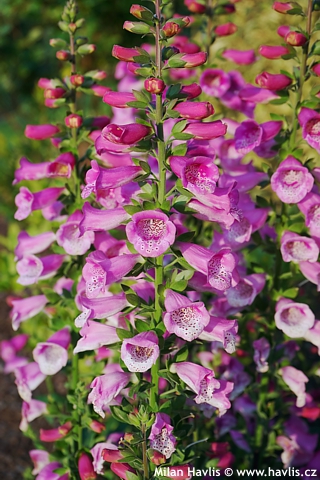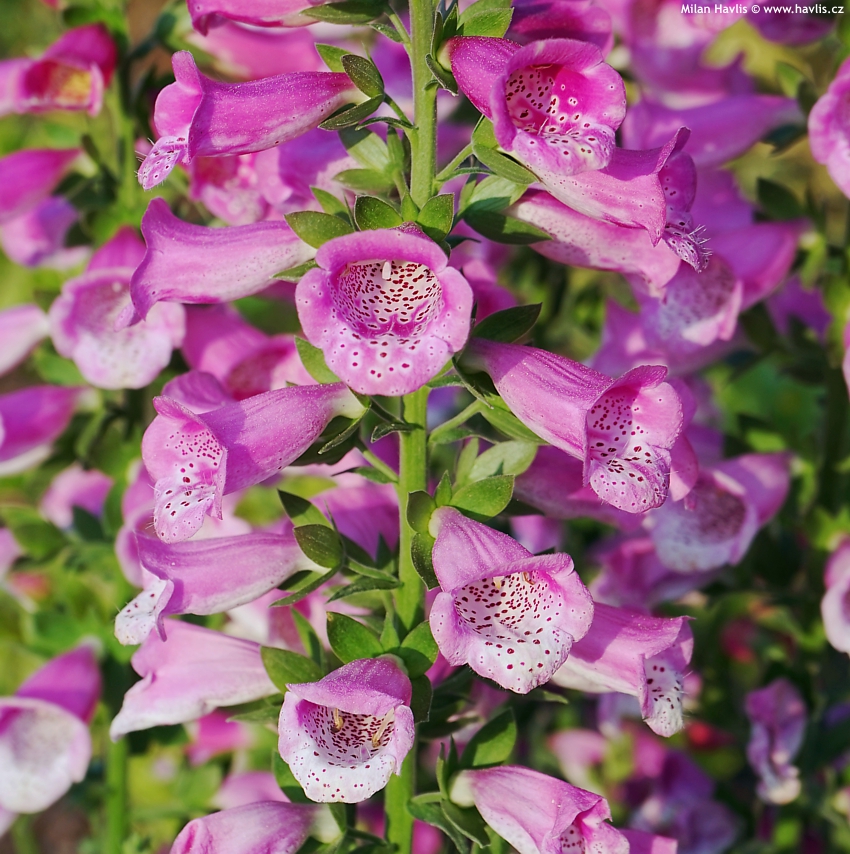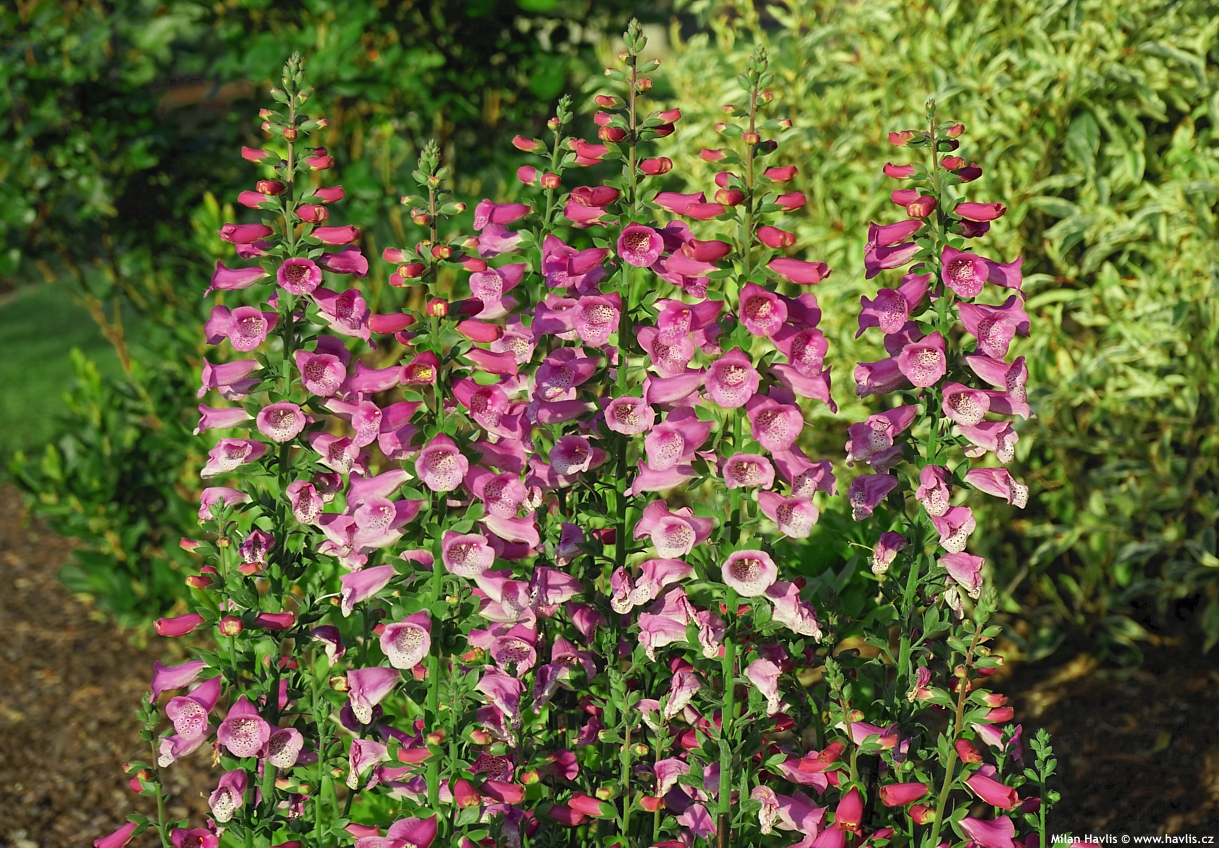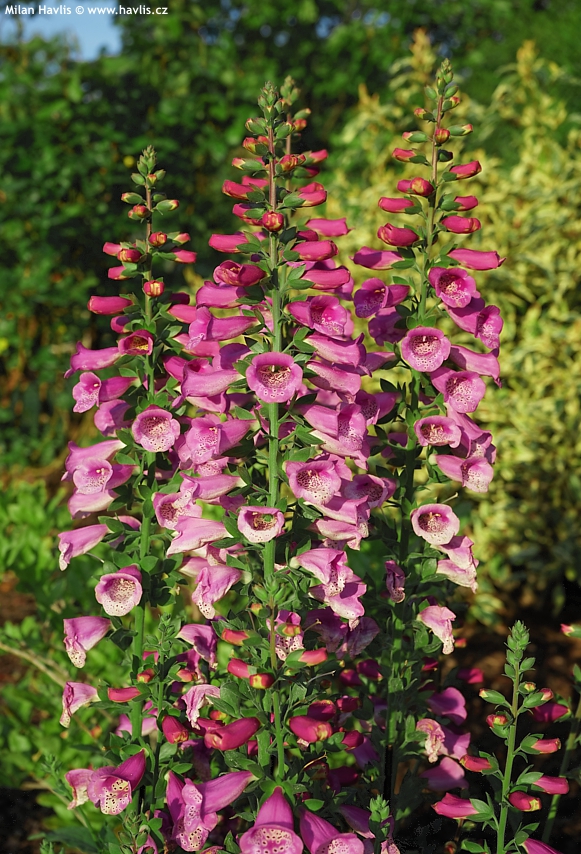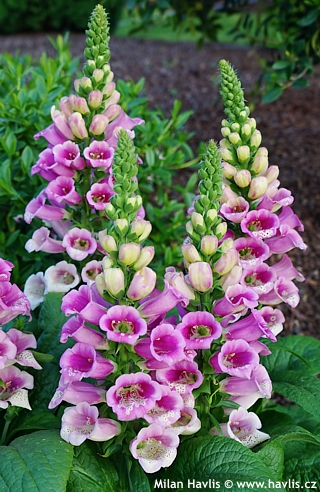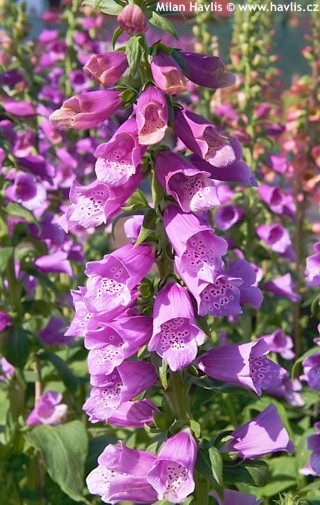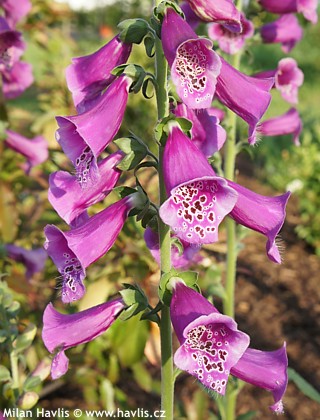Digitalis purpurea 'Digluc' LUCAS common foxglove


Digitalis
Common foxglove is a European native and is found marginally in our country, too. Its flowers are so attractive that breeders keep hybridizing them and every now and then they introduce a new, improved variety. These improvements usually involve not just pretty flowers but mainly their life span – in the wild common foxglove is a biennial which needs one whole year for plant maturation to produce flower stems the year after. No one is so patient today. So new varieties are hybrids eliminating waiting so they either flower in their first year or they behave like clumping perennials without a need for self-seeding.
Lucas is a handsome guy among foxglove varieties. It is highly valued not only for beautiful flowers but also extended blooming time as its secondary stems keep on producing flowers until September. Flowers are widely funnel-shaped, rich purple pink outside and almost white inside with showy maroon spots margined white. They are loosely clustered along its stems. The main ones are about 60-70 cm tall and secondary stems reach some 30 cm. It is short-lived perennial or a biennial which needs to set seeds for another generation and bloom in its second year.
Leaves are smaller and thinner than those on most other foxglove varieties, broadly lance-shaped, mid green, conspicuously veined. Foxglove is a medical plant but also quite toxic. Even though it does not make any fruit-like looking berries that would attract children it is not recommended for mass plantings near playgrounds, school yards, or kindergartens.
Foxglove will grow in almost any soil apart from too wet or too dry. In the wild it is found in humus-rich soils in light woods and its margins, which means that it will love partial shade in your garden, or full sun if kept moist. Excess fertilizing may result in production of enormous leaves but no flowers. Hardy to about -34°C (USDA zone 4).
Last update 04-12-2020.

































